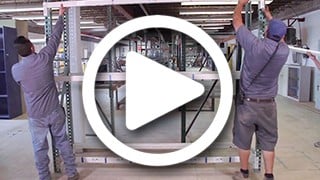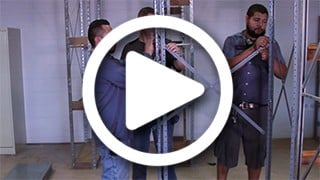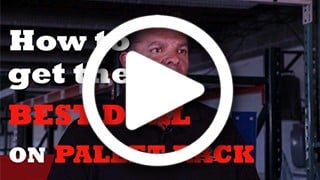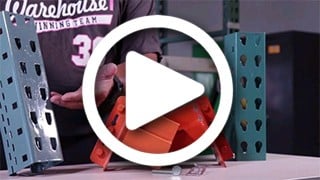What is the Best Type of Span Track for My Operation?
In my last span track post, I established how span track is one of the premier flow racks on the market. Now I'll focus on selecting the right span track for your operation. Your industry and operation (split case, full case, fork truck aisle, each pick, etc.) will help establish the right span track model or combination of models for you.
Two important measurements to consider when going through the span track selection process are the distance between roller centers and the width of the track.
Roller Centers
The distance between span track roller centers is typically 1″, 2″ or 3″. Carton lengths under 8″ need 2″ roller centers to flow and support properly.
Carton lengths at or above 8″ can use 3″ centers 
| Max. Carton Length | Max.Roller Centers |
| 4″ | 1″ |
| 8″ | 2″ |
| 12″ | 3″ |
Track Width
Unlike carton flow systems, span track does not require guide rails. Span track's full width rollers provide excellent product tracking. Cartons with firm, flat bottoms can be a greater width than the actual track section. 
| Span Track Width | Max. Carton Width |
| 4″ | 8″ |
| 8″ | 13-1/2″ |
| 12″ | 18″ |
| 15″ | 22-1/2″ |
Span Track Models
There are three standard span track models: high profile, low profile and deck span track.
High Profile Span Track High profile span track installs on any pallet rack beam and sits “high” or on top of the beams. The track is easily adjustable front, back, left and right, providing full flexibility to reslot span track for various SKU’s.
 |
| High Profile Span Track |
Stops and Load Bars To keep product from flowing right onto the floor, high profile span track requires a stop at the front/picking end of the track. These may be built into the track or they can be added. An optional feature on the rear/input end is an impact load bar, used to absorb impact loading.
Track Flexibility High profile span track can be flush with pallet rack beams, or it can overhang beams at the front and rear to increase storage capacity. The profile of the pick face can be contoured or straight. While most operations with full case picks use a straight face, operations with loose pick often utilize a contoured pick face profile– see pictures below. This contured profile optimizes carton access and visibility.
 |
 |
| Contured pick face profile | Straight pick face profile with nose over front option |
Low Profile Span Track Low profile span track sits “low” or inside pallet rack beams, either in the beam step or in hangers. This type of span track is most utilized in operations where forklifts are required in the aisles and/or vertical space is limited.
 |
| Low Profile Span Track |
Hangers vs. No Hangers
Hangers are made to accommodate various types of pallet rack beam tops. The rear/input end of the low profile span track has a “low bar” hang rod that sits inside the rear beam hanger. Conversely, the front/pick end of the track has a “high bar.” Rollers at the rear/input end are flush with the beam top. Rollers at the front/pick end are lower than the top of the beam. This allows the front beam to be utilized as a package stop. Low profile span track systems that sit inside beam steps without the use of hangers require a package stop at the front/pick end.
 |
| Low Profile Span Track on Hangers |
Deck Span Track
Deck span track easily drops into any single deep pallet rack, nesting between beam top and step. This model is most utilized in full case or each pick applications that are located in the lower area of selective pallet rack.
Push Back System
For operations with LIFO (last in, first out) stock rotation, deck span track is used in a push back design. Packages are loaded and picked from the front.
 |
 |
| Deck-Track w/stops on both ends, use in Push-Back Applications. |



